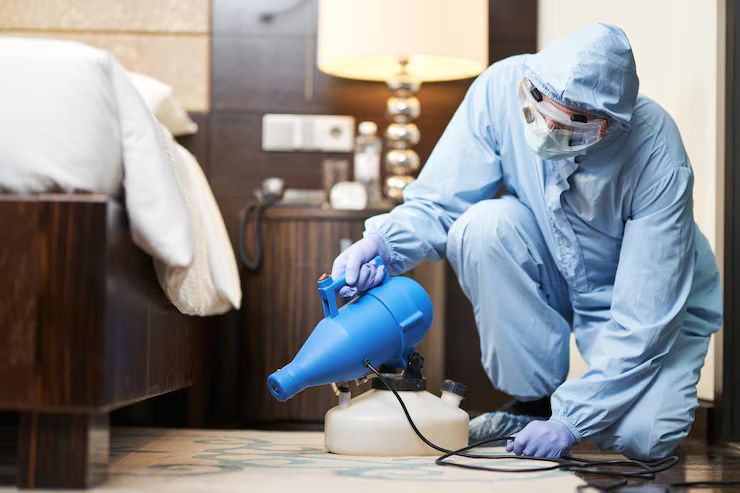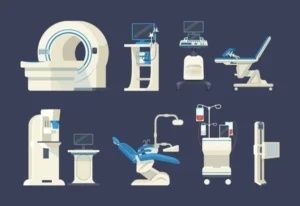The Complete Insights and Advice to Effective Pest Control Solutions
Pest control refers to the methods used to manage insects, rodents, termites, and other unwanted organisms that affect homes, businesses, farms, and public spaces. These pests can contaminate food, damage property, spread diseases, and disturb daily life. Because pests naturally adapt to human environments, regular pest control practices exist to keep surroundings safe, clean, and balanced.
Pest control solutions have developed over time as cities expanded, food supply systems grew more complex, and environmental concerns became more important. Today, pest control is not only about eliminating pests when they appear; it includes prevention, monitoring, hygiene improvements, structural maintenance, and sustainable management of ecosystems.

Modern pest control relies on scientific research, improved equipment, eco-friendly products, heat treatment technologies, and digital monitoring systems. These help ensure that pests are controlled safely without harming people or the environment.
Importance – Why Pest Control Matters Today
Pest control is essential for maintaining health, safety, and hygiene. As climate patterns shift and urban populations increase, pest activity has become more frequent and widespread. This makes effective pest management more important for homes, businesses, and communities.
Who Is Affected?
-
Homeowners dealing with insects, termites, or rodents
-
Food-processing industries and restaurants
-
Hotels, hospitals, schools, and public facilities
-
Farmers protecting crops and storage units
-
Warehouses and logistics companies
-
Apartment buildings and commercial properties
Problems Pest Control Helps Solve
-
Property damage caused by termites, rodents, and wood-destroying insects
-
Food contamination in kitchens, restaurants, and food factories
-
Spread of diseases through mosquitoes, flies, and rodents
-
Reduced crop productivity due to agricultural pests
-
Damage to stored goods in warehouses
-
Unhygienic conditions affecting homes and workplaces
An effective pest control plan helps maintain standards of sanitation, reduces long-term repair costs, and ensures healthier living and working environments.
Recent Updates – New Trends in Pest Control (2023–2024)
The pest control industry has been evolving with new technologies, sustainable materials, and data-driven tools. Over the past year, several key developments have shaped how residential, commercial, and agricultural pest management is carried out.
1. Expansion of Smart Monitoring Devices
In 2023–2024, many facilities adopted IoT-based rodent sensors, digital traps, and remote monitoring dashboards. These systems provide real-time alerts, reducing the need for frequent on-site inspections.
2. Increased Use of Eco-Friendly Formulations
Biodegradable baits, plant-based insecticides, and non-toxic repellents gained more acceptance due to rising environmental awareness and stricter regulations.
3. Growth of Heat and Steam Treatments
Heat treatment for bed bugs and other insects became more common through 2023–2024 as an alternative to chemical-heavy approaches.
4. Greater Awareness After Vector-Borne Disease Surges
Warmer temperatures in many regions caused increased mosquito activity in 2023–2024, leading to more community-level awareness campaigns and integrated vector control programs.
5. More Organizations Adopting Integrated Pest Management (IPM)
IPM strategies—which combine monitoring, sanitation, sealing entry points, environmental controls, and targeted treatment—continue to rise due to their safety and long-term efficiency.
A simple comparison table highlights the evolution of pest control approaches:
| Feature | Traditional Methods | Modern Methods (2023–2024) |
|---|---|---|
| Approach | Reactive | Preventive & integrated |
| Tools | Mainly chemical | Smart sensors, eco-friendly options |
| Sustainability | Limited | Higher due to green technologies |
| Monitoring | Manual inspections | Automated and real-time |
| Long-term Cost | Often higher | More controlled and efficient |
Laws or Policies – Regulations Affecting Pest Control
Pest control practices are controlled by national and state-level regulations to ensure safety, environmental protection, and responsible use of pest management products. Regulations vary by country but generally include licensing, certification, chemical safety standards, and worker protection requirements.
India
-
Insecticides Act, 1968 governs the import, manufacture, and sale of pesticides.
-
Central Insecticides Board & Registration Committee (CIBRC) approves pest control products for safe use.
-
Local municipal bodies regulate fumigation, mosquito control, and sanitation programs.
-
Agricultural pest management is monitored through state agriculture departments.
United States
-
The Environmental Protection Agency (EPA) regulates pesticides under the Federal Insecticide, Fungicide, and Rodenticide Act (FIFRA).
-
OSHA policies govern worker safety for pest control operators.
-
State-specific rules apply to professional licensing and certification.
European Union
-
The Biocidal Products Regulation (BPR) ensures that pest control products meet environmental and toxicology standards.
-
Food industry pest control falls under EU food safety policies.
Global Movement
-
Countries worldwide are encouraging reduced chemical usage, improvement of green pest control technologies, and increased focus on public health surveillance.
These regulations help ensure pest control is performed responsibly, safely, and with minimal environmental impact.
Tools and Resources – Helpful Platforms for Effective Pest Management
Many tools and resources support individuals, businesses, and agricultural users in planning, monitoring, and improving pest control activities.
Useful Apps and Digital Tools
-
Pest Identification Apps (Picture Insect, Pest ID Pro) – Identify pests using photos.
-
Smart Rodent Monitoring Systems – Track rodent movement through sensors.
-
Weather and Vector Tracking Apps – Monitor mosquito activity and seasonal risks.
Online Resources
-
National Pesticide Information Center (NPIC) – Guidance on safe pesticide use.
-
CDC Vector Control Resources – Public health guidelines for mosquito and rodent control.
-
FAO IPM Materials – Support for agricultural pest management practices.
-
University Extension Programs – Research-based IPM recommendations.
Templates and Guides
-
Pest inspection checklists
-
Home and facility maintenance checklists
-
Agricultural pest monitoring sheets
-
Sanitation and hygiene templates
Practical Tools
-
UV insect traps
-
Rodent monitoring stations
-
Temperature and moisture meters
-
Safe storage boxes for pest control supplies
These resources help make pest control more planned, organized, and efficient.
FAQs – Common Questions About Pest Control
Q1. Is pest control necessary if no pests are visible?
Yes. Many pests—such as termites and bed bugs—remain hidden. Preventive inspections help reduce long-term problems and keep environments clean.
Q2. Are natural or eco-friendly pest solutions effective?
Eco-friendly methods can be effective when combined with proper sanitation, monitoring, and structural maintenance. They are commonly used today due to their safety profile.
Q3. How often should a building be inspected for pests?
Homes benefit from quarterly inspections, while food facilities and warehouses may need monthly monitoring due to higher risk.
Q4. Can pest control completely stop pests from returning?
No system offers permanent prevention. Seasonal changes, climate conditions, and structural gaps can allow pests to return. Regular maintenance is essential.
Q5. What signs indicate pest activity?
Look for droppings, damaged packaging, nests, unusual sounds, moisture buildup, strange odors, or visible insects or rodents.
Final Thoughts
Effective pest control is essential for maintaining safe, clean, and healthy environments across homes, public spaces, and businesses. As new technologies, eco-friendly solutions, and scientific monitoring tools continue to develop, pest control is becoming more efficient and sustainable. By following regulations, using modern resources, and practicing preventive maintenance, individuals and organizations can manage pests responsibly.
Understanding the importance of pest control, staying aware of current trends, and adopting recommended tools helps create a long-term strategy for healthier and more hygienic surroundings.






